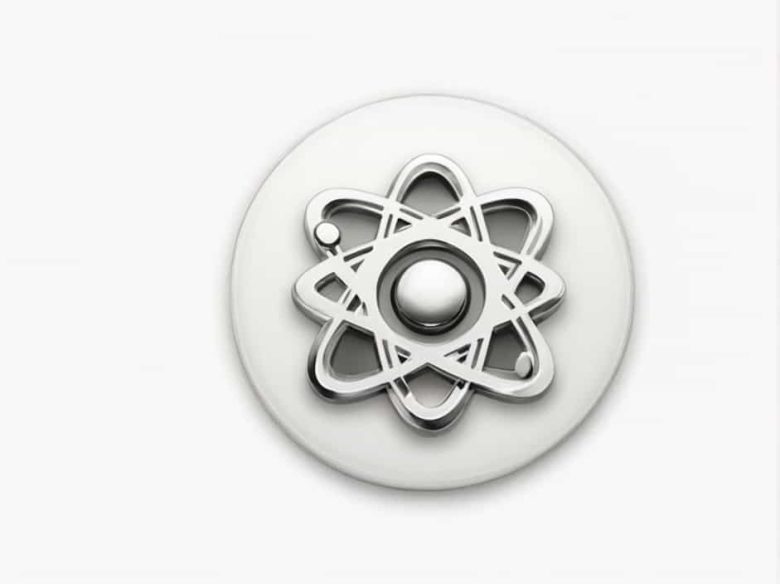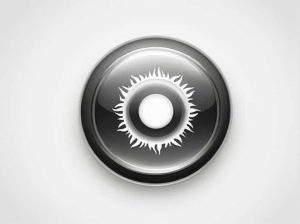Chromium is a metallic element known for its shiny appearance and corrosion resistance. It is widely used in stainless steel plating and industrial applications. The atomic number of chromium is 24 meaning it has 24 protons in its nucleus.
In this topic we will explore:
- The atomic structure of chromium
- Its physical and chemical properties
- Where chromium is found
- Common uses of chromium
- The importance of chromium in industry and health
What Is the Atomic Number of Chromium?
The atomic number of an element represents the number of protons in its nucleus. Since chromium has 24 protons its atomic number is 24.
In the periodic table chromium is represented by the symbol “Cr” and is located in Group 6 and Period 4.
Chromium in the Periodic Table
- Symbol: Cr
- Atomic Number: 24
- Atomic Mass: 51.9961 u
- Group: 6 (Transition Metals)
- Period: 4
Chromium is a transition metal meaning it has variable oxidation states and strong metallic bonds.
Atomic Structure of Chromium
Subatomic Ptopics in Chromium
Chromium consists of:
- 24 protons (positively charged)
- 28 neutrons (neutral ptopics)
- 24 electrons (negatively charged)
Electron Configuration of Chromium
The electron configuration of chromium is:
This configuration is unusual because chromium prefers a half-filled d-orbital which makes it more stable.
Physical and Chemical Properties of Chromium
Physical Properties
Chromium is a hard shiny metal with excellent corrosion resistance. Some of its key properties include:
- Appearance: Silvery metallic
- Melting Point: 1907°C (3465°F)
- Boiling Point: 2671°C (4840°F)
- Density: 7.19 g/cm³
- Hardness: One of the hardest metals
Chemical Properties
- Oxidation States: +2 +3 +6 (most common)
- Corrosion Resistance: Forms a protective oxide layer
- Reactivity: Reacts with acids but not easily with air or water
- Magnetism: Chromium is paramagnetic (weakly attracted to magnets)
Where Is Chromium Found?
Chromium is not found in its pure metallic form in nature. Instead it is extracted from chromite ore (FeCr₂O₄) which is mainly found in:
- South Africa (largest producer)
- Kazakhstan
- India
- Turkey
- Zimbabwe
Chromite ore is mined and processed to extract chromium for industrial use.
Uses of Chromium
1. Stainless Steel Production
Chromium is a key element in stainless steel making it:
✅ Rust-resistant
✅ Stronger and more durable
✅ Shiny and attractive
Stainless steel is used in:
- Kitchen appliances
- Medical instruments
- Buildings and bridges
2. Chrome Plating
Chromium is used for chrome plating to create a shiny corrosion-resistant surface. This is common in:
✅ Car bumpers and wheels
✅ Bathroom fixtures
✅ Industrial machinery
3. Aerospace and Military Applications
Because of its strength and heat resistance chromium is used in:
- Jet engines
- Missiles and armor plating
- High-performance tools
4. Pigments and Paints
Chromium compounds produce bright colors used in:
- Paints
- Dyes
- Ceramic glazes
- Fireworks
5. Chromium in the Human Body
Chromium is an essential trace element for humans. It helps regulate blood sugar levels by improving insulin function. Foods rich in chromium include:
- Whole grains
- Broccoli
- Nuts
- Meat
Chromium and Environmental Impact
Is Chromium Toxic?
While chromium(III) is safe and essential for health chromium(VI) (hexavalent chromium) is toxic and can cause:
⚠️ Lung cancer
⚠️ Skin irritation
⚠️ Environmental pollution
Industries must follow strict regulations to control chromium pollution.
Frequently Asked Questions (FAQs)
1. What is the atomic number of chromium?
The atomic number of chromium is 24 meaning it has 24 protons in its nucleus.
2. Why is chromium important in stainless steel?
Chromium makes stainless steel rust-resistant durable and shiny.
3. Is chromium a metal or nonmetal?
Chromium is a metal in the transition metal group of the periodic table.
4. Where is chromium commonly found?
Chromium is mainly extracted from chromite ore found in South Africa Kazakhstan and India.
5. Is chromium dangerous to humans?
Chromium(III) is safe and essential but chromium(VI) is toxic and harmful to health and the environment.
Chromium is a hard shiny metal with atomic number 24. It is widely used in stainless steel chrome plating aerospace and pigments. While chromium(III) is essential for health chromium(VI) is toxic and requires careful handling.
Understanding chromium’s atomic structure properties and applications helps us appreciate its importance in industry and daily life.



